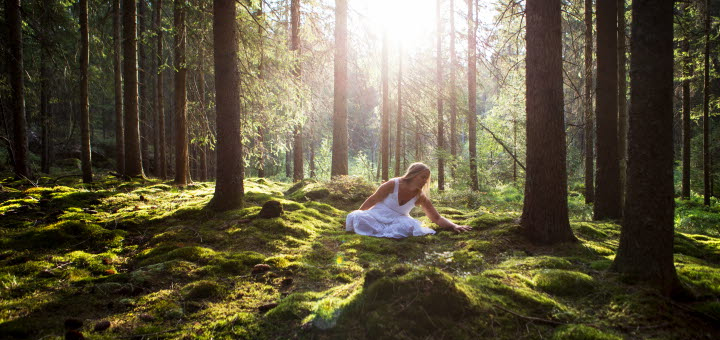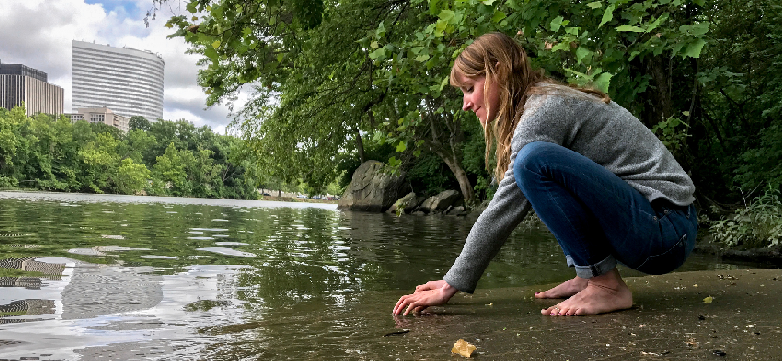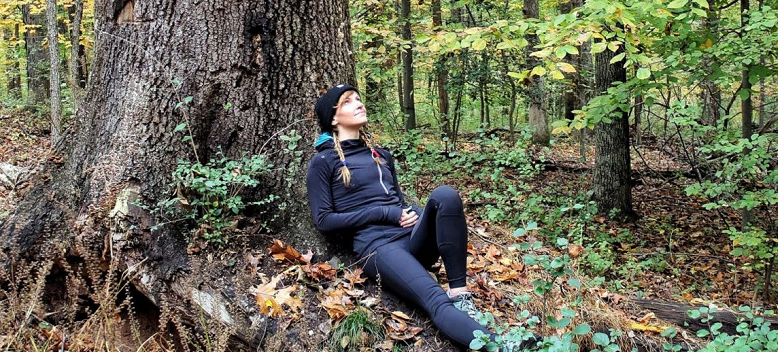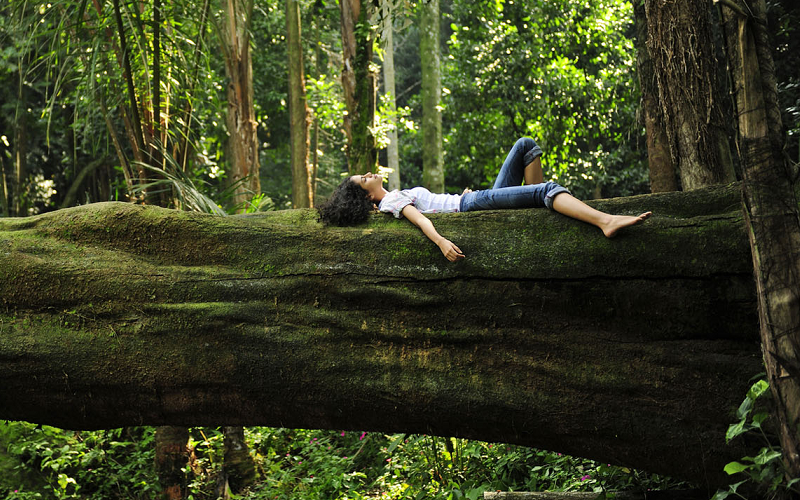Have you ever gone for a walk in nature without any interruptions? You may have unknowingly engaged in the well-known Japanese practice of forest bathing, also known as shinrin-yoku. This involves immersing your senses in the natural environment of a forest or other natural area.
What Is Forest Bathing (Shinrin-Yoku)?
Forest bathing, also known as shinrin-yoku, is a Japanese wellness practice that involves immersing oneself in a natural environment, such as a forest, and using the senses to connect with nature. The idea is to engage with the environment through activities such as walking, taking in the sights, sounds, and smells of the forest, and relaxing the mind and body. The practice is said to have numerous health benefits, including reducing stress, boosting mood, and improving overall well-being.
Forest bathing, or shinrin-yoku, is a wellness practice that originated in Japan in the 1980s. The term shinrin in Japanese means “forest,” and yoku means “bath.” So shinrin-yoku means “bathing in the forest atmosphere, or taking in the forest through our senses.”

The practice was introduced by the Japanese government as a way to promote health and wellness, and to encourage people to spend more time in nature. It was based on the idea that exposure to nature has a positive impact on both physical and mental health, and that connecting with nature can help to alleviate stress and improve overall well-being.
Since its introduction, forest bathing has become a popular wellness practice in Japan and has since gained popularity around the world. It is now recognized as a form of ecotherapy, which is the use of nature to promote physical, mental, and emotional health. The practice continues to grow in popularity, and more and more people are discovering the benefits of spending time in nature and connecting with the environment through their senses.
Benefits of Forest Bathing
The benefits of forest bathing include reducing stress and boosting mood, improving mental clarity, strengthening the immune system, lowering blood pressure, and improving sleep. Spending time in nature has been found to have a positive impact on overall well-being, and many people report feeling physically and mentally rejuvenated after engaging in this practice.
- Reducing stress: Spending time in nature has been found to lower levels of the stress hormone cortisol and increase feelings of relaxation.
- Boosting mood: Immersing in the sights, sounds, and smells of the forest can have a positive impact on mood, helping to alleviate symptoms of depression and anxiety.
- Improving mental clarity: Spending time in nature can help to clear the mind, improve focus and concentration, and enhance creativity.
- Strengthening the immune system: Spending time in nature has been shown to increase the production of natural killer cells, which are important for fighting off viruses and cancers.
- Lowering blood pressure: Forest bathing has been found to lower blood pressure, reducing the risk of heart disease and stroke.
- Improving sleep: Spending time in nature can help to regulate the body’s sleep-wake cycle, leading to better quality sleep.

What Is the Single Greatest Benefit of Forest Bathing?
The above are just some of the benefits of forest bathing, and more research is needed to fully understand its effects. However, many people report feeling physically and mentally rejuvenated after spending time in nature.
The greatest benefit of forest bathing is subjective and can vary from person to person. However, some commonly cited benefits include reducing stress and anxiety, boosting mood and overall well-being, improving mental clarity, strengthening the immune system, lowering blood pressure, and improving sleep.
In general, the act of spending time in nature and connecting with the environment through the senses has a calming and restorative effect on the body and mind, and has been shown to have a positive impact on overall health and happiness. So, while there may not be a single greatest benefit, many people find that forest bathing provides a range of physical, mental, and emotional benefits that contribute to a sense of overall well-being and happiness.
How to Take a Forest Bath
Taking a forest bath is relatively easy, as it simply involves spending time in a natural environment and using your senses to connect with nature. The idea is to slow down, leave distractions behind, and allow yourself to be fully present in the moment. While there is no specific set of rules or guidelines, the key is to be mindful and let the experience unfold naturally.

Some people may find it easier to take a forest bath with a guide or in a group setting, while others may prefer to go solo. Regardless of your preference, the important thing is to find a natural environment that you enjoy and allow yourself to fully immerse in the experience.
- Find a forest or natural area: Choose a nearby forest or natural area that you can easily access.
- Turn off distractions: Leave your phone and other distractions behind and focus on being present in the moment.
- Use your senses: Take in the sights, sounds, and smells of the forest, and let the environment stimulate your senses.
- Walk slowly: Walk at a slow pace, and allow yourself to truly experience the environment around you.
- Connect with nature: Engage with nature by touching trees, picking up leaves, or simply observing the wildlife.
- Reflect and meditate: Take some time to reflect and meditate, and allow your mind to relax and unwind.
- Enjoy the experience: There is no set amount of time for a forest bath, so simply stay in the forest for as long as you like and enjoy the experience.
Remember that the key to a successful forest bath is to slow down and allow yourself to be fully present in the moment. Don’t worry about trying to do anything in particular, simply let the experience unfold naturally.

